Season 2 / Episode 14
Sheila Botting, Principal & President, Americas Professional Services at Avison Young | The art of the possible in CRE | 37:41
Transcript
DA: Welcome to TEN, the Tenant Experience Network. I’m your host, David Abrams. In this episode, we are connecting with Sheila Botting, Principal and President, Americas Professional Services at Avison Young. In this episode, we will learn about Sheila’s unexpected journey to commercial real estate and her desire to discover the art of the possible. Sheila is never content and never really feels successful. For her, it is all about the journey and her thirst or quest to learn more. I love Sheila’s positioning of mentors or her network in her life, thinking about those people as her own personal board of directors. We chatted about the evolution of teams and the transition from highly technical teams to now multidisciplinary, becoming more about differences and less about similarities. We also had a great discussion about the shared responsibility to create workspaces and human experiences that people will want to be a part of, and the opportunity to include BIAs and municipalities in the conversation to help revitalize downtown cores. We are excited to be sharing this podcast with you, so be sure to follow TEN so you never miss an episode of the Tenant Experience Network. All right, now, I’d like to welcome Sheila to the show. I’m really glad that you could be with us today.
SB: I’m so thrilled to be here too, David. Thank you for the opportunity.
DA: My pleasure. I’ve been looking forward to this for a long time. Let’s start with your journey to your current position as Principal and President, Americas Professional Services, at Avison Young. How did you get started? Walk me through it, and share a little bit more about your current role.
Read more
SB: Sure, so like many other people in our real estate industry, I didn’t plan to be in real estate. I kind of just landed here in this place, but started through to a couple of degrees undergrad in geomorphology and marine biology from the University of Victoria, BC, a master’s in environmental studies from the University of Waterloo. Like, who knew that would create a real estate role and opportunity? But I knew I always liked projects, so I started working at a KPMG predecessor firm, before then working with what was Royal LePage Commercial, a Brookfield company that became Cushman and Wakefield, and so through all of that, what I loved were the projects, the deals, learning how to, you know, change something or analyze something, understanding all of the details behind it really mattered, and I would say those fundamentals I learned through my early part of my career, and then I found that I wanted to change the world or change things that we were doing or make a difference, make an impact, and so it seemed that, you know, every time I had a baby, there was, at the tail end of that, there was a whole new opportunity that came about, and so the first big job came to run all of the Cushman and Wakefield valuation advisory for Canada and then the Professional Services, which is very exciting, and I learned a lot about global valuation, global leadership, how to deliver across our real estate platform, and it taught me so much about the investment and the asset side of the real estate lifecycle. I then worked at Deloitte, where I became the senior partner Canadian real estate leader, and that was more on the occupier side, so literally all the lessons on the asset side, you flipped to the occupier side, and I was given this tremendous gift to recreate Deloitte’s workplace in Canada, you know, an opportunity that, you know, taking a really smart organization with brilliant people and say, “What is the art of the possible? What could we possibly create here?” And so it was a wonderful journey there, and then doing this same thing for many clients, and so whether we were restructuring the organizations or their workplace or dealing with change management, all of those things in a bundle really satisfied for me personally my intellectual curiosity in how to solve problems, how to take big, hairy, strategic ideas and solve problems. One of the projects was to work on behalf of the investors for Avison Young and do the underwriting for their investment. So at the tail end of that process, I approached Mark Rose, Avison Young’s CEO, and said, like, “Is there something we could do together? I actually have a vision that could be interesting,” and so of course, Mark was brilliant as he’s, you know, assembled his entire executive team, and so my current role is now to build up professional services, which includes all of the fee-for-services businesses that are non-brokerage or property management across North America, and so when you think about it, Avison Young’s the fastest growing commercial real estate firm globally. It’s gone from 40 million to a billion two revenue in the last decade, and so as they’re building up the offices now, it’s about adding layers to that and greater technical expertise, building their teams, building platform, and so that’s really what my job is across North America. Wildly exciting, working with an incredible team. You know, wicked smart people with a real thirst for I guess I’d call it adventure, right? We have a passion to be able to create new things in our real estate world, and both our board, our investors, and our executive team is razor-focused on creating the art of the possible for Avison Young in the marketplace.
DA: Amazing, well, like you, I too never thought I’d end up in real estate. Of course, I started my career first in financial accounting and then went on to be a, run a marketing and communications agency and got my first taste of commercial real estate, having won the business and working with Brookfield and Brookfield Place since we launched many years back. I won’t say when. That would date myself. And of course, now, as the founder of a technology startup in PropTech. So you just never know where you’re going to end up, right?
SB: Yeah, it’s exciting. It’s about the journey, right? It’s about the journey, not necessarily the destination, and so that’s the really exciting part, and our industry is full of folks like us who have an innate curiosity, and how can we do this or that, whatever it happens to be.
DA: You know, at the end of the day, it really is all about the people that you work with, and so I wholeheartedly agree that to work with great people, smart people, that’s really what makes it worthwhile, and kudos to you for, you know, moving on from one great opportunity to another. I first met you, actually, at Deloitte and listened to you present, you know, the background to the space that we were in, and of course, the space at that time was absolutely magnificent and still is today, and I hope it’ll continue to be utilized for many more years to come. So again, awesome. So I’m just curious: why do you think you were so uniquely suited to this opportunity, then? I mean, if you didn’t set out, you know, to have a career in commercial real estate, what sort of helped you to become successful? Skills, mentors, colleagues, books, moments in time. What do you attribute your success to?
SB: So number one, I think that for those of us in these roles, we never feel successful, right? What is success? We’re always on a journey, always in a thirst or a passion for the next step, the next direction. How can we do all these things together? And so I think that’s kind of one of the guiding lights, you know, that you’re always in this thirst or this quest for things. In terms of my own background, I have had some amazing people that have been part of my journey, and those amazing people have really helped to, you know, highlight the art of the possible in whatever role they’re in. So one, and I won’t put names on this, but one gentleman who was, you know, chair of our organization and went on to work with another, he was all about public speaking, all about engaging with people because now it’s a two-way dialogue, and you’re learning as much from the audience or the individuals as you might share some thoughts and ideas. Totally brilliant, totally brilliant. Another one of my colleagues was very operations-focused, and if we put together parts A, B, C, D, and E, we will make tenfold the opportunity for the people that are part of our organization, and just went out and made things happen. So I was like, “Oh, that’s really cool. Like, how can you possibly imagine doing that?” And then others have had different elements of, you know, I’ll say, you know, wisdoms, pearls of wisdom that they’re able to help with, and so ultimately, you know, I think for anybody in their career, you almost have like a mini board of directors, you know, people that you bounce ideas from, and you say, “Is this a reasonable thing to do? Is this the right thing to do, and am I completely out to lunch thinking about A, B, C?” And so I think having that backdrop is really important, and of course, those people will change throughout your own journey as well.
DA: No, I was just say I love that comparison, though, sort of your own board of directors becomes almost your steering network, your steering team that you just can draw on as you continue along that journey. That’s a great example.
SB: And the third piece, and again, this is me, and I’d say probably in the last five years is one of the, another pearl that I’ve been taught by, and that is having these amazing people around me on the team that I work with, that I’m really completely empowered by the energy, the thirst, the curiosity of the team and so that together, we go out and solve problems, and so the paradigm of 10 years ago having a pyramid, and you’re at the top of the pyramid, like, long gone the way of the dodo bird, right? And so now, it’s about empowered teams and how do we make things happen? So the people that I’ve worked with are incredible with what they’re teaching me, and so you say, “Okay, how can I take, you know, A plus B plus C and make it incredible for everybody?” And that’s kind of the journey that I’m on right now with all these other people. How do we make that happen in a really cool way? And I think that’s also an evolution on leadership style across our market and our industry.
DA: Mm-hmm, got it. Love it. Let’s agree that living through a pandemic is absolutely horrible. That being said, we don’t believe we can continue to use it as an excuse, so we believe this is the time to be better, do better, and ultimately build something better. So if I gave you an extra $100,000 of budget right now, how would you spend it and why?
SB: Oh, that’s a giant question, giant question. So it goes back to what I was just talking about: teams, and so I think that I would always invest in great people and great teams because the energy that they bring to your outcome is totally amazing, so that’s what I am using it for and what I would always continue to use it for, and so that would be a tremendous opportunity because it’s about, you know, you talk about the power of people. It’s all about people and what we can create together.
DA: Right, looking at that team now and maybe even differently than maybe, you know, two or three years ago, would there be specific gaps or holes or areas of expertise or discipline that would excite you or interest you now, given how the world has unfolded?
SB: So I’ll pick 10 years ago. So 10 years ago, people were all about their technical expertise. Yes, I do appraisal, and I can do ARGUS cash flows. I’m brilliant at that, and yes, I can pick a cap rate. Aren’t I brilliant? Or I can look at supply, demand, and vacancies, and oh, look at the triple A vacancy rate downtown Toronto is, you know, 2%. Everybody really focused on the technicals of their job and being brilliant in those technicals, so 10 years ago. Today, it’s completely different. It’s about highly empowered, multidisciplinary teams that offer a range of skillsets and functions to be able to address, in our case, our client issues or our internal issues, and it’s about the differences, not about the similarities, and so when you think about those differences, so on our team, just some of the classic personalities that we have, and again, you know, we’ll have our chief operating officer voice of reason bringing folks together through to our very entrepreneurial, you know, leadership team; through to our innovation and technology leader, who always goes out and does new things; through to our brokerage leaders and me on Professional Services; through to our marketing and our HR. You know, I think of finance.
DA: Yeah, yeah.
SB: The account put all of the differences in those personalities, like, it’s brilliant. Then you bring them together for a process. So it doesn’t become about one voice or the other. It’s about the collective answer and the right solution, and so that’s a very different way that teams would come together, so similarly, when I build teams today, it’s about the differences of the personalities and what they can offer.
DA: Right, thank goodness that we’ve evolved so much in this area ’cause it really does make things exciting. So listen, 20 months, we’re 20 months into this pandemic at least. I still think there’s a lot that we don’t know. That being said, I feel pretty confident that the return to workplace will happen, however, much slower than we first thought. We keep looking for these triggers in time, and I think now, we’re all anticipating January and what that will bring. So flexibility, we believe, is going to continue to be an evolving theme, an emerging theme in commercial real estate, recognizing that people will be working from anywhere, including the home, so to that end, I recently said the following: “Placing value in the physical workplace doesn’t make you anti-hybrid or inflexible. We have to listen to our employees and create a work experience that supports their needs.” I’m curious as to what your thoughts are on the implications for commercial real estate.
SB: Yes, yes, yes, and yes. Of course, so I’ll talk about the journey that I’ve been on, and so before the pandemic, three, four, five years ago, even 10 years ago, people recognized that the way we work has changed, which means we don’t sit at our desks nine to five or seven to seven, processing paper from the left to the right of our desks. So therefore, because of that, the average seat across, you could say the world if not North America, was empty 50% of the time. So before the pandemic, large organizations were already transforming their workplaces. Whether it was a bank, a government, or whatever, they were already full flight in that process, so the business case made sense. You reduce your real estate footprint and your, you know, your ESG carbon emissions at the same time, and you increase you investment into people and technology. That’s literally the one-two punch on the business case. Then enter the pandemic, largest change management activity globally, so now, the whole world knows about it. This is what we can do. So when you think about return to office, well that has many different implications. We were working like crazy throughout the pandemic. In fact, there’s been all kinds of charts and analytics that show that productivity has gone up within, you know, knowledge working organizations. So one of the best examples of this would be in the middle of the pandemic, Leesman did a survey of 2,000 people around the globe in various knowledge worker companies and found that 85% of those people wanted a hybrid work style in the future, and when you enhanced the physical and virtual environment for those employees, they actually returned to work more regularly, so hybrid means 85% maybe two to three days a week at home and 15% four to five days in the office. If you created a better work environment, people would want to be in the office more, so that really says a lot. So you’re saying, “Return to.” Well, return to what? We’ve been working like crazy through the entire pandemic, so I’m still working. It doesn’t matter where I physically am. So then the next question becomes what happens in these physical environments? Are we going to return to the cube farms, where we’re processing paper? I don’t think so. Now, of course, it depends on the industry and the business that you’re in and what’s required of the workers and the various work styles of those workers, so all of those things have to be factored in. So some organizations may choose to go back to the traditional ways of working, quite possible. Others will say, “Forget it. We can send everybody home.” Those are very rare as well. What’s happening is somewhere in between, and so we’ll pick a downtown any city, North America, and we’ll say, “We’ve got an office building,” and when we recreate the space for those people in the building, the building owner/operator now has to contemplate how do we work with the tenants to get people to come back, so now, they have to activate their lobbies, you know, put more retail in their food courts. They have to have pizza Fridays or coffee Tuesdays, or whatever it is that they do from a base building perspective. We might consider about, you know, painting the base building staircase and to have exercise class in the staircase, running up and down the stairs, or yoga, or whatever it happens to be. So the base building has a responsibility, and then the physical workplaces that the tenants would design, rather than being, call it 80, 90% organized toward the individual, you’ll see much more focus on collaboration spaces, teaming spaces, social spaces, so that when you and I go to the workplace, we may go pick a huddle room or an open teaming area. We may share a screen, do whatever, but we’re doing very different things than processing paper from the left to the right of our desks. So you’ll see the physical work experience totally changing, and at the end of the day, catering to the employees and reward for talent because we have the ability to work anywhere that we want, and so if organization A isn’t going to offer me a flexible work style, well, I can go after organization B tomorrow, so the competitive market pressures on businesses to offer a hybrid work style are ramping up considerably. Hopefully, that answers your question.
DA: It does, and you spoke to this, but I’ll just want to re-emphasize again, I really do believe is that a collaboration between building owners and operators, between the tenants themselves, between the employees, the people that live and work in buildings. I really believe it’s, you know, this group coming together and really thinking hard about, you know, the experience that is offered, and I really do believe it’s through collaboration and perhaps, you know, a technology company such as HILO, you know, what I am building and others, that can be instrumental in helping to create, you know, a really compelling reason why, not that we have to come back, but because we want to come back, and there’s value, and there’s benefit, and it’s exciting, just as exciting as we’ve discovered it can be, you know, working at home and in our pajamas and having more flexibility and time with our family, and to your point, still being highly productive. So you know, it’s going to be very exciting to see how these parties come together over the next months and years to, you know, continue to reinvent the industry.
SB: The other part of this is in that experience, that employee experience, you have to think about the employee journey. So all of our website, we’ve got content on an X Factor which talks about the different employee journeys. So you think about you and I, we may have very different ways that we want to work, so what the opportunity is for the owners of the buildings and the tenants of the building to contemplate many different journeys so that they can offer that full spectrum to people when they do return to the office. Here in Toronto, we also have the additional challenge and opportunity of our Underground Path Network, and you know, I was just on an interview with a reporter earlier about how the Path Network, virtually all the small businesses, whether they’re pizza shops or shoe repair or clothing shops, during this pandemic have been hit exceptionally hard, and that could be retail anywhere downtown North America or globally. So now, you think about in the return, what does it look like? How do we activate? How do we use the downtown business improvement areas, the, you know, the municipalities right through to the building owners, through the tenants, and reimagine the future? What could that look like, and how do we recreate something that becomes completely magnetic? So return to isn’t, you know, January 2022, everybody going to, you know, bang, snap, and off you go. That’s not going to happen, and it will take a probably a measured return back to the office. What we’re seeing from our clients today is that they would like people to return one to two to three days a week now, and then we’ll probably continue through Q1 2022, and maybe that becomes the norm. Maybe it’s two, three days a week is the norm, rather than the five day a week in the office, and so then you say okay, if you’re going to plan for your people, what do you do to entice them to come back in and to make use of the physical asset that you’ve created and the culture that you’re trying to achieve within your business and your enterprise? Giant questions, David, giant questions.
DA: I know, I know, and you know, if we get together again in three months, it’ll be interesting to hear, you know, what’s going on at that time and how we would answer these questions. I’ll just mention, before we take a short break, that we’ve just partnered with the Downtown Yonge BIA, one of the largest BIAs in downtown Toronto, very much to what you just spoke about in terms of creating a partnership to help support the local businesses, connect those local businesses back to people that live and work in buildings, so we’re very excited about this new partnership and looking forward to making an announcement soon, so I mighta just let the cat out of the bag, but we’re on that same wavelength. I think, you know, it’s these kinds of partnerships that are going to be necessary to continue to revitalize downtown quarters especially.
SB: Absolutely.
DA: Let’s take a short break, and we’ll be right back.
Commercial Break
This episode of TEN, the Tenant Experience Network, is proudly brought to you by HILO. HILO is a software solution used by building operators to attract tenants, boost revenues, and streamline operations by creating connected, engaged, and informed building communities. Building operators need to connect their tenants now more than ever before, recognizing that people will be working from everywhere, including the home, forever. Unlike apps that silo one building, the HILO Tenant Experience Network is the only solution that connects people to their building community, network, and city where they work, live, or visit. To learn more about HILO, visit hiloapp.com.
DA: So we’re back with Sheila Botting, Principal and President, Americas Professional Services, at Avison Young. Let’s jump right back into it. The commercial real estate industry is moving faster and faster towards recognizing that their core business is not really about building ownership, but it’s rather about creating the best customer experience for their tenants or residents. As we like to say, “Places for people,” so can you share your thinking around how we will define and deliver outstanding tenant experience now and in the future?
SB: So I think it’s all about human experience, right? It’s about, for office buildings, it’s employees. For shopping centers, it’s about the shoppers and the workers who are in those spaces, so the human experience, and so when you think about that human experience, you think about the various types of people, the various user journeys. Certainly, the technology industry used that for a long time, the user journeys. We’re now applying that toward the real estate world, and we’re saying, you know, if one personality comes in, I think on the Avison Young website and our X Factor website, we talk about Veronica, right, and Veronica’s a mom at home with a couple of kids, and you know, what she has to do to make it to the office every day, and then what her experience is like, both a physical virtual experience, and then, sorry, a virtual experience and then an in-office experience, and so how do you navigate that experience? What does that look like? So that’s a really key piece of designing buildings and designing opportunities. So you then layer it into the assets themselves, you know, whether it’s brick-and-beam or core-and-shell, whatever it is, what is the journey that the building owner and investor wants to create? Because within the walls, there’s certain things that you can do, so do you create the experience for the retail, animate lobbies? Those sterile, marble lobbies are long gone the way of the dodo bird, right? So how do you activate lobbies? How do you think about fitness? And maybe for some of the older buildings, you just put, you know, stairs from up and down between floors in the building and get exercise the same time as a simplistic way, or you build, you know, downtown BIAs have contemplated having green path networks throughout the BIA, so again, you think about any of the opportunities to enhance that employee experience with a physical asset, and then for the tenant who’s leasing the space, making sure that you’ve got opportunities for people to engage with each other. So the before scenario is having all those cubes and of the cube farm, where everybody’s, you know, like a gopher ducking inside their hole, and then you pop up, you might see somebody. It’s about actually having glass walls and opportunities to connect with your people because it’s those connections in the workplace that become everything because the more we connect, the greater we feel like we belong, and we can bring our whole selves to work. You know, there’s all of that that applies to those connected workplaces and the experience overall, and so again, it’s mapping through those user journeys, having many different types of settings for people to engage in based on how they work or how they shop. So when you think about the shopping experience, it plays out in the same way because when I go to shop, having, you know, a food experience, and I think of shopping malls and our shopping centers are so much more than just fashion and clothing. It’s about the entire engagement experience, and one of the many different things, and I think many of our shopping malls got this right long before the office asset classes were around. You know, around the seasonal holidays, they’d have holiday events, holiday shopping things to do. You know, Santa would appear inside our malls for every child to go and visit, but I think some of those lessons can infiltrate the office market. We’re also seeing that play out in the industrial sector. So when you think about it, you know, industrial employees, whether they’re in big warehouse distribution centers or they’re in manufacturing centers, also having the right experience for those employees at work really matters, so that same theme is permeating virtually every asset class that we have in the real estate world.
DA: Yeah, and really interesting, and I know that, you know, when HILO first launched, we were very focused on office. We’re now doing multi-family, but we’ve been thinking a lot about industrial and recognizing the growth in that particular market, and yet, you know, the needs are the same. There are still people working in those buildings. Granted, maybe they don’t go up 30 or 40 floors. Maybe they just, you know, they’re three or four acres wide, but they still have the same needs and aspirations, and to your point, you know, I think connection is a huge. Certainly coming out of COVID, we’ve recognized that even more, that as much as we’ve made this work and we’ve been productive, you know, we do need connection. We do need to be with people and be able to talk and engage and be connected to people, and I think the industrial sector’s another example where we perhaps have long forgot about them in many ways, and I think they need to be part of that discussion today.
SB: So I’ll share with you that one of the big projects I worked on was from the city of Hamilton here in Ontario, Canada, large industrial, you know, heavy steel industry that’s now going through a transformation, and you say, “Okay, what do we do with those lands? How do we recreate the experience?” And in meeting with all of the city of Hamilton and all the owners of the business in that area, it’s all about the people. It’s all about recruiting and retaining the brightest and best from the university to come and engage in their industrial experience. So now, it’s the same thing that applies to office. You know, how do you put in, you know, flexible spaces? How do you build wellness centers? How do you put green trails around the area? How do you put bicycle paths? And so those are things that typically, people don’t contemplate in an industrial market, but now suddenly, that becomes important, so again, it’s any asset class. I’ll speak to, you know, in the hotel industry, they get that.
DA: Of course.
SB: People go through hospitality training schools and all the rest. Those people who are through those training schools, beautiful for the rest of the marketplace because they can absolutely do great work in office or industrial and recreate that experience so that we absolutely want to go to that workplace or the shopping center or the whatever.
DA: I was going to say I think the commercial real estate industry, the traditional side of the industry, could learn a lot from and draw from the hospitality industry, and it would be, we would be the better for. I recently met someone on the multi-family side, on the operation side, who spent 10 years at Disney, and they brought him in to make their multi-family living experience Disney-like, and I thought, “My God, that company is brilliant,” like, absolutely brilliant, right?
SB: Totally, this is exactly what we’re talking about because it’s the war for talent. It’s the war for people and the war for foot traffic, and so what do you do to make that interesting? Bring Mickey Mouse along. I’m sure that would all be, all be an opportunity.
DA: Who knows? Sheila, can you share any details about something new you’re working on or a challenge you are facing right now in light of current world circumstances, something you think our listeners might find interesting?
SB: So I think it’s around this whole workplace topic, so when you think about it, one of the challenges for every single business around the globe is what does the new normal look like? We know it’s not going to go back the same old way. What is that new normal? So I talked with the largest change management activity around the world. It’s getting all of our clients and then people aligned. What does that look like for your organization? Number one challenge, trick, opportunity, and so it’s about from the most senior traditional leaders right through the young folks coming out of university. How do you knit together a strategy for that organization that makes so much sense to future-proof their office, their investment, their enterprise, really? ‘Cause this is about an enterprise value, and so what do you do to recreate that for that business? That’s number one biggest challenge, I think, for every single business under the planet right now. So I’ve got a lot of fun planning my space.
DA: I’m sure. I’m sure. We just launched a companion podcast called “space_bar,” where we’re actually talking with people of all backgrounds, of all ages, about their, you know, experience of working remotely and what coming back to the workplace looks like for them and how they’re feeling, and not a prognostication on what will be three months or six months or 12 months from now, but how are they feeling today? Really just tapping into what people are thinking and feeling right now and then sharing that with our industry and hopefully providing some value so that people can be, make, you know, informed decisions and really just tap into real people, real thinking, so we’re pretty excited about that.
SB: Do tell. Do tell what’s happening. What are they saying? What are the key things there?
DA: Well, I think we’ll be releasing our fifth episode later today. I’ll make sure I send you a link, and we’ll stay connected. I mean, I think people are very much anticipating what it’ll be like to come back. I think personally, there’s a strong desire to be connected with people again and to have some form of experience, but I think there’s also, you know, a little bit of concern, a little bit of fear, so you know, we’re in the early innings of what that looks like, and we’re just trying to show, you know, literally week by week, month by month, what does that journey look like?
SB: And is that fear pandemic health-related fear, or is it going back to office, and is there a difference between Canada and the US? We have something called the Vitality Index, and it shows that the Canadian cities have been largely slower to return than some of those in the US. So when I’m down in the US quite a bit, you wouldn’t think that there’s anything major going on. People are returning to work again, not in the full way that we were in the before scenario, but they are back in the office. The streets are busy. The shopping centers are busy. In Canada, we tend to be fairly more conservative.
DA: Absolutely. All right, our closing speed round, Sheila, an opportunity for us to get to know you a little bit better as well. If you could have one superpower, what would it be?
SB: To be 30 years younger to advise my younger self to not be afraid when you go through your journey, to embrace large opportunities, so to be 30 years younger to do it all over again.
DA: I love it. I love it. What city or country do you want to travel to first when you can, and why?
SB: So I’ve already traveled to the US, love every minute of it, thoroughly embraced it, can’t wait to meet all of my, you know, colleagues I’m spending past 21, you know, 20 months with on Zoom. The next city is probably London in the UK to meet some different colleagues there and to do some personal travel, you know, seeing much as I can of, each market that I go to, I try to travel around them.
DA: Very good. What do you do when you’re not working? ‘Cause I know you work hard, and you’re all over the place, so when you’re not working, what’s taking up your time?
SB: I’m really quiet. These days have been front and center a lot, so I’m with my family. You know, I have adult children. We’re with my family. We do a lot of family events, whatever that is, and we head north a lot, so many different things.
DA: Great; the number one thing that would bring you back to the workplace.
SB: The people that I work with. It’s all about the people. It’s all about the leaders and the inspiration and the fun that we can have at work together. I don’t need to go to work to do a PowerPoint slide deck or process something, but to engage in some great ideas, to work through problems together? Any day of the week.
DA: Love it, and then what are you reading or watching right now that you are absolutely loving?
SB: Oh, I’m so brain dead from Netflix, Prime TV, Apple TV, and all the rest, but I couldn’t even tell you. There’s so much stuff on television. You tell me which one I haven’t watched is probably more to the point. There’s so much coming out these days, and some of it, you just watch because it’s there, not because it’s really important to watch, so I’m actually trying to turn it off as much as I can. We’re so overwhelmed by media, and so I think that’s the opportunity, is to be quiet.
DA: I know, but we’ve also used that media as a bit of a relief, a release, a distraction, so but I totally, I totally hear you. So we started out this discussion. You spoke, you know, a lot about people, people in your life, the team that you’re building, and you sort of ended off on the one thing that would bring you back to the workplace, and I’ll just say personally, I’m in 100% agreement, and in launching this podcast, it’s been an incredible opportunity for me to meet people. You know, we build a technology platform for commercial real estate, but we like to say that it’s really not about technology for technology’s sake. We really are trying to build a product, a platform, that is all about people. Same way we view buildings for people. They’re not just spaces. They are really a place for people to be, so I think the common thread that I’d like to just pull out, I think, from both of our perspectives is definitely, it is all about the people. I’m really thankful and appreciative of the time you’ve taken today to talk with us and share your thinking with our listeners, and I look forward to continuing our engagement and our relationship with one another and continuing to see where all of this goes in the future, so again, thank you so much for joining me today.
SB: David, thank you tremendously for the opportunity. I’m truly honored to be one of your guests on this show. Thank you so much.
DA: All right, take care. All the best now. I want to thank Sheila Botting for joining me on today’s episode of TEN, and for sharing her journey from early beginnings on the asset side of the business to moving to the occupier side, and now focused on professional services. Great learning for all our listeners, and an opportunity to gain insights into what it takes to become the innovation leader. Please be sure to follow TEN for future discussions with leading professionals and industry experts, who all have something to say about the impact of technology on tenant experience in the built world. We love hearing from you, so if you enjoyed this episode of TEN, please share, add your rating, and review us through your preferred podcast provider. If you or someone you know would like to be a guest on a future episode, please reach out to me directly at david@hiloapp.com, and until our next episode, I wish you all continued success in building community where you work and live. Thank you.
- November 29, 2021
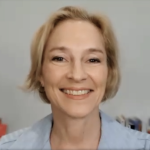
Sophie Wade | Founder of Flexcel Network and Host of Transforming Work podcast | Advancing workforce innovation
Season 5 / Episode 3 / 56:42
In this episode we learn that Sophie is an avid observer of people and has used this skill to shape her view of the world, and now the subject of ‘work’ specifically. She points out that for the first time, we are at a point where we are asking questions about how we should be designing spaces to meet our needs better.
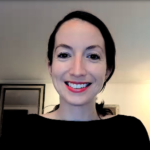
Jen Tindle | Chief Comic Relief Officer | AllAboutCRE.com | All about CRE and CRE technology
Season 5 / Episode 2 / 41:42
In this episode we learn that Jen’s latest project, allaboutcre.com, is an educational platform that builds on her love of learning. She shares some great insights into what the CRE industry needs to be thinking about over the next 3 to 5 years to continue to be successful, as well as her thoughts on how building tech stacks are evolving.

Nadine Ezzie & Ryan Elazari | Co-hosts of CRE Unplugged | Innovating from the streets to the skyline
Season 5 / Episode 1 / 37:35
In this episode, Nadine and Ryan share what led them to collaborate as hosts on a new podcast, the aptly named CRE Unplugged — Innovating from the streets to the skyline. They have a lot of passion to go with their ambitious mission to not only be informative and educational but to add a welcome dose of humour as well.

Celebrating 60 Conversations on TEN
Hard to believe that it’s been over 3 years since we launched the Tenant Experience Network (TEN) podcast as a way to connect with people at a time when we all felt isolated. Host and HILO Co-founder and CEO, David Abrams, has had the opportunity to interview some amazing people from leading CRE and Proptech companies, and in real-time, share what’s really happening in buildings and communities across North America. David wanted the program to provide a true pulse on what was actually going on in the industry, across all asset classes, without being sensational or polarizing, as is often found in the media.
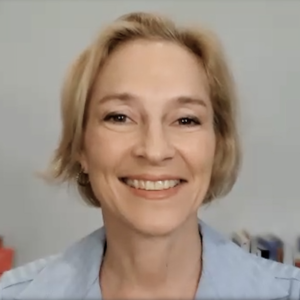
Sophie Wade | Founder of Flexcel Network and Host of Transforming Work podcast | Advancing workforce innovation
Season 5 / Episode 3 / 56:42
In this episode we learn that Sophie is an avid observer of people and has used this skill to shape her view of the world, and now the subject of ‘work’ specifically. She points out that for the first time, we are at a point where we are asking questions about how we should be designing spaces to meet our needs better.
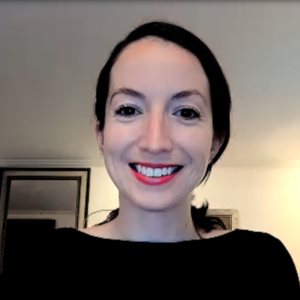
Jen Tindle | Chief Comic Relief Officer | AllAboutCRE.com | All about CRE and CRE technology
Season 5 / Episode 2 / 41:42
In this episode we learn that Jen’s latest project, allaboutcre.com, is an educational platform that builds on her love of learning. She shares some great insights into what the CRE industry needs to be thinking about over the next 3 to 5 years to continue to be successful, as well as her thoughts on how building tech stacks are evolving.
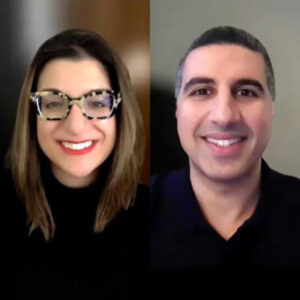
Nadine Ezzie & Ryan Elazari | Co-hosts of CRE Unplugged | Innovating from the streets to the skyline
Season 5 / Episode 1 / 37:35
In this episode, Nadine and Ryan share what led them to collaborate as hosts on a new podcast, the aptly named CRE Unplugged — Innovating from the streets to the skyline. They have a lot of passion to go with their ambitious mission to not only be informative and educational but to add a welcome dose of humour as well.

Celebrating 60 Conversations on TEN
Hard to believe that it’s been over 3 years since we launched the Tenant Experience Network (TEN) podcast as a way to connect with people at a time when we all felt isolated. Host and HILO Co-founder and CEO, David Abrams, has had the opportunity to interview some amazing people from leading CRE and Proptech companies, and in real-time, share what’s really happening in buildings and communities across North America. David wanted the program to provide a true pulse on what was actually going on in the industry, across all asset classes, without being sensational or polarizing, as is often found in the media.